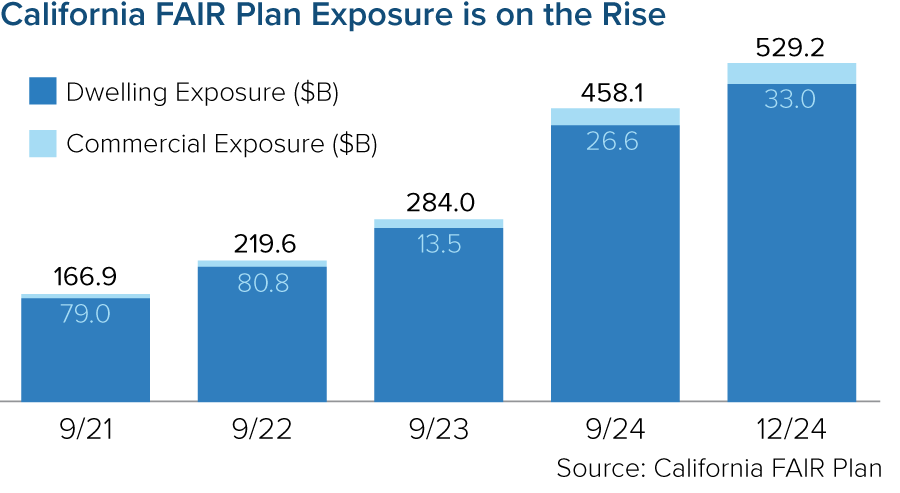
By Loretta L. Worters, Vice President of Media Relations, Triple-I
When Karla Scott first entered the insurance industry, she didn’t set out with a grand plan to become a leader in marine underwriting.
“I fell into it,” she admits. Starting at a brokerage firm focused on logistics insurance, she quickly discovered a passion for global trade and cargo underwriting.
“It’s different every day,” says Scott, who is global logistics product leader and senior managing director, Ocean Marine, The Hartford. She joined the company after The Hartford acquired Navigators in 2019.

“The technical work keeps my skills sharp, while the camaraderie and shared purpose offer personal and professional fulfillment.”
– Karla Scott
Scott works with clients, agents, and brokers around the world to ensure that businesses have the protection they need through the product’s entire supply-chain life cycle. Her team insures raw materials and finished goods that are transported on containerships, planes, trains, and trucks. From geopolitics to commodity shifts, it’s an ever-evolving, complex industry that demands constant awareness and adaptation.
Now, with 24 years in marine insurance, Scott reflects on a career shaped by resilience, strong mentorship, and a deep commitment to community. Her journey underscores both the opportunities and challenges faced by women in a traditionally male-dominated field.

“Disrupting trade with…China, Canada, or Mexico would affect cost and the availability of insurance coverage.”
– Karla Scott
A Sea Change for Women
“Fifteen years ago, I sat at a table with 35 industry leaders and was the only woman,” Scott says. “But progress is happening. While marine insurance remains a niche within the broader insurance world, more women are entering the field and rising into leadership roles.”
There continues to be a gender pay gap and lack of career advancement opportunities, but Scott says “part of the reason, frankly, is that women tend not to self-advocate. It’s critical in the marine insurance space to promote yourself, but women often feel uncomfortable doing that. Self-advocacy is not boastfulness. No one is going to put you in the spotlight unless you step into it. Those are the skills we need to teach women coming up in this business.”
Being a woman on the West Coast in an East Coast-dominated industry meant navigating additional hurdles.
“There’s a current you swim against,” she says.
Overcoming Barriers
Support from forward-thinking male mentors and advisors helped her stay the course.
“I am indebted to three mentors who presented different strengths,” Scott says. “I learned how to manage people, to motivate people, technical skills, how important your reputation is in this industry, and how to push hard and be aggressive in certain situations and not aggressive in other situations.”
She also candidly addresses the internal battles many women face — imposter syndrome.
“I’ve experienced it myself and have reached out to my mentors, who are great at listening to my frustrations,” she says. “Having a strong network can help you work through those issues. Now that I’m on the other side, I’m pushing my mentees through those obstacles, helping them find their voice and teaching them to self-advocate—skills critical to closing the gender pay gap.”
The Power of Community
Scott’s involvement with the American Institute of Marine Underwriters (AIMU) and the Board of Marine Underwriters in San Francisco has been instrumental in her career. She has served as president of the latter twice and speaks passionately about the importance of collaboration in the insurance industry.
“One of the most unique parts of marine insurance is that we work in partnership with competitors to solve industry problems,” she says. “The technical work keeps my skills sharp, while the camaraderie and shared purpose offer personal and professional fulfillment.”
Trade Tensions and Industry Impacts
As global trade faces increasing scrutiny and tariff battles, Scott is already seeing the effects.
“Clients are canceling freight contracts, and volumes are dropping,” she says. “The result means lower trade volume, higher valuation of goods, and potential inflationary cycles may hit consumers hard.”
She points out that the lack of federal stimulus (unlike during the pandemic) leaves little room for economic cushioning.
“It’s a ‘hold your breath’ kind of moment,” Scott says.
Cargo theft is another growing concern.
“It spikes when inflation rises,” Scott notes, pointing out how easy it has become to resell stolen goods on platforms like Amazon and eBay.
Talk of reshoring manufacturing often overlooks the complexity of global trade.
“You can’t flip a light switch and manufacture everything in the U.S.,” she explains. “Machinery to build those goods often comes from Germany or Japan.
“Disrupting trade with top partners like China, Canada, or Mexico would significantly affect both cost and the availability of insurance coverage,” Scott says. “If consumer confidence drops and trade volumes fall, insurance demand will, too.”
Scott also highlights a deeper economic risk: the potential erosion of the U.S. dollar’s dominance in global trade. “If that shifts, the American economy could face even greater challenges.”















